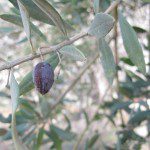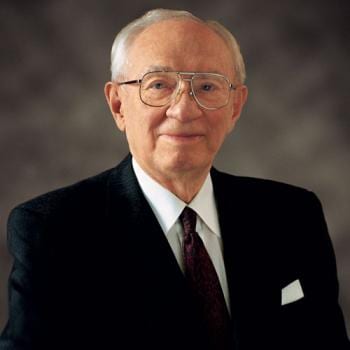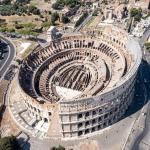
This begins the first of several weeks coverage of what’s come to be known as The Sermon on the Mount. While
well known to Christians today… few appreciate the richness of these sayings of Jesus: their radical promises and demands have often been blunted either through familiarity or as a result of a precipitate quest for immediate relevance.- Dictionary of Jesus and the Gospels, “Sermon on the Mount”
A few things about this.

First, this sermon only appears in its fulness in Matthew, occupying nearly three entire chapters. Many but not all of the same sayings appear in Luke 6:17-49, not on a “mountain” or good-size hill, but a plain, hence Matthew has the “sermon on the mount” while Luke has “the sermon on the plain.” Others of Jesus’ Mount sayings are scattered elsewhere. Notably, the Book of Mormon version, known as the Sermon at the Temple, with all the sayings together, hews closer to Matthew. (For lengthy thoughtful analysis, you can read John Welch’s updated book from Amazon, or online.)
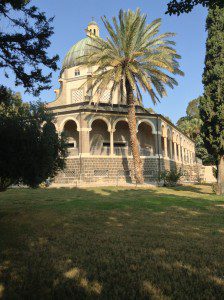
Second, before looking at individual trees (as we LDS tend to do), we should step back and take a look at the forest. Matthew has arranged this very very carefully, to make a serious big picture point both about who Jesus is and about his relationship to the Old Testament.
Like other early Christians, Matthew viewed Jesus as the “new Moses” prophesied in Deut 18:15: “Yahweh your God will raise up for you a prophet like me from among your own brothers. You must listen to him.” This is why the life of Matthew’s Jesus closely parallels the life of Israel’s ancient lawgiver. Like Moses, Jesus was born as a savior. Like Moses, a foreign king tried to kill him. Like Moses, Jesus was hidden from the threatening king in Egypt. Like Moses, Jesus fasted in the desert wilderness for forty days and nights. Like Moses, Jesus returned from that desert experience and taught God’s people on the mountain. And in that Sermon on the Mount he presented his teaching as a new law that reversed and fulfilled the law of Moses. Also, in Matthew as a whole, the teaching of Jesus is presented in five sections, each ending with the words “When Jesus had finished saying these things.” This structure parallels the five books of Moses that stand at the beginning of the Old Testament. Once we realize that this was Matthew’s intention—to present Jesus as the new Moses of prophecy—then we are in a better position to appreciate the conclusion of his Gospel in Matt 28:16–20, commonly known as the “Great Commission.”
Readers will probably recall that, because of his sin, Moses was not able to lead the Israelites into the Promised Land. At the end of his life, he stood on a mountain overlooking the land and said to the Israelites, “I cannot go with you, but God will be with you.… Go, and kill all the nations.” This parallels very closely what we find at the end of Matthew’s Gospel. Jesus takes his disciples “to the mountain” and there speaks his own final words: “Go, make disciples of all the nations … and I will be with you.” It is quite clear that Matthew wished to portray Jesus as a better Moses, who, because he was sinless, could address his followers from within the land and could extend the promise to be with them in their mission. Particularly striking, of course, is the profound contrast between the two missions: “kill all the nations” (Greek panta ta ethnē); “make disciples of all the nations” (again panta ta ethnē). Matthew apparently means to teach us that the true fulfillment of the command to kill the Canaanites is actually found in our efforts to convert the lost to faith in Christ. The Gospel is thus understood as a spiritual conquest in the name of Christ and for the good of the nations. So the Gospel of Matthew is a deliberate and sustained attempt to redeem the Old Testament law and make it serve the purposes of the Gospel of Jesus Christ.- Kenton L. Sparks, Sacred Word, Broken Word: Biblical Authority and the Dark Side of Scripture, 68–69. (I’ve gained a great appreciation for Sparks recently. See the bottom of my post here.)
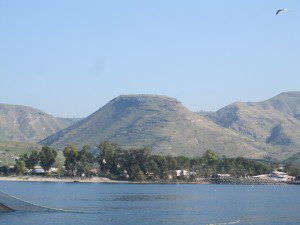
The sermon opens with a series of what are called the Beatitudes, from Latin beatus, meaning “blessed, happy.” The Latin translation of the Bible was, for all practical purposes The Bible for a long long time, which is why so many of our religious references are in Latin. (Think of Mary’s magnificat, or the nunc dimittis of Simeon.) The Latin, of course, was translated from the Greek… but most of what these people actually spoke was probably Aramaic or (less often) Hebrew. There’s very little, if anything, to suggest that any of the NT was originally written in those languages, but they’ve left their mark in all kinds of ways, and this is one of them.
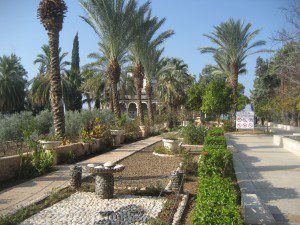
The form of the beatitudes is very Hebraic. If you go back into the Hebrew Bible to places like Psalm 1:1 “happy/blessed is the man who…”, we see the general pattern of celebrating certain kinds of people, people who do certain things by using the phrase ashrey, which means something like happy/blessed. (It is not the typical word for “blessed”, which may be familiar, baruch. If you’ve ever been welcomed in Hebrew, you’ve heard beruchim habba’im, lit. “blessed are those who come!”) These passages like Psalms get translated into Greek as makarios… which is exactly what we find Jesus saying in Matthew’s Greek Beatitudes. To capture the happy/blessed meaning of this, N.T. Wright in his translation prefers to express ashrey/markios this way.
3 ‘Wonderful news for the poor in spirit! The kingdom of heaven is yours.
4 ‘Wonderful news for the mourners! You’re going to be comforted.
-Tom Wright, Matthew for Everyone
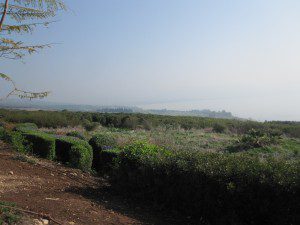
A lot of expounding of these beatitudes and the whole sermon is based on English dictionaries or current meanings of things. I expect several classes to get into arguments discussions about “meek” or “perfect,” for example. Many of them involve either allusions to then-current ideas or allusions to the Old Testament. So, let’s look at a few
Matt 5:8 says, “blessed are the pure in heart, for they shall see God.” References to the pure in heart are all over the OT, but one stands out in this context. Psalm 24 is one of three “temple entrance” hymns, and lays out the moral/ritual requirements for entry. This should be quite familiar, actually, as it used to be a Seminary scripture.
3 Who shall ascend the hill of the LORD? And who shall stand in his holy place? 4 Those who have clean hands and pure hearts, who do not lift up their souls to what is false, and do not swear deceitfully. (NRS)
The hill (“mountain”) of the Lord, and “holy place” are parallel references to the tabernacle/temple, which is where God was to be found. To enter into God’s presence and see him, whether in the visionary heavenly temple, or the earthly, one had to be “pure in heart.”
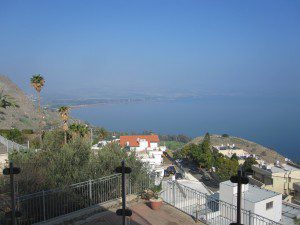
This is one of several pointers in the sermon towards a temple context, as John Welch argues (see linked book above.)
As for “pure in heart”, it shouldn’t be divorced from “clean hands” in this passage. Hands represented action, whereas your heart was the center of both emotion AND conscious thought. They did not have quite the same heart/mind dichotomy the way we do today. (See this short article .) To be pure in heart, then, was to have good motivations, to not rejoice in evil.
Moving on to another example, Matthew 5:48 says “be ye therefore perfect, as your Father in Heaven is perfect.” Several things of interest here. First, we often don’t pay close attention to little words. What is the force of “therefore” here? Generally, it indicates that what follows is the logical conclusion of what has previously been said. How does that apply here?
Second, I think we make very different cultural assumptions about the concept of “perfect.” We talk about “the perfect day” or being completely sinless, and I don’t think either of those are in play here. So, what is?
Third, let’s talk about the Greek. This particular verbal form can be interpreted two ways, either as a command (as the KJV reads)… or as a future. While no recent translation I’m aware of opts for it, it is possible to read (especially in connection with the “therefore”) as ” you will be perfect. (The 1901 American Standard Version says “ye therefore shall be perfect” which captures the ambiguity.) What might that suggest? Continuing with the Greek, instead of interpreting based on one English word, (also known as a gloss or a translational equivalent), what is the actual semantic range of the Greek word here? The word is teleios, and you might recognize the root as the same one in television, telephone, etc. We don’t want to commit the root fallacy, etymological fallacy or any of the others (see Exegetical Fallacies), but it’s instructive that the tele– aspect has to do with distance, going far. The various Greek meanings (not all of which are appropriate here) range from fully-grown, mature (1Co 2:6), adult, complete, fully-developed, meeting the highest standard, expert, fully initiated (in a ritual sense).
In that light, let’s point out an interesting variant in the Book of Mormon. After Jesus finishes the Sermon at the Temple, he repeats this, with a significant difference. (To “translate” between Matthew and the Book of Mormon version, add 7 to the Matthew chapter number. So Matthew 5:48 is 3 Nephi 12:48.)
“Therefore I would that ye should be perfect even as I, or your Father who is in heaven is perfect.” It’s suggestive (and no more) that whatever teleios means, it did not apply to Jesus at this point, but it does after his resurrection.
The other usual approaches to this is related to our modern ideas of perfection, and was expressed by Brigham Young.
“Be ye as perfect as ye can,” for that is all we can do, though it is written, be ye perfect as your Father who is in heaven is perfect. To be as perfect as we possibly can, according to our knowledge, is to be just as perfect as our Father in heaven is. He cannot be any more perfect than He knows how, any more than we. When we are doing as well as we know how in the sphere and station which we occupy here, we are justified in the justice, righteousness, mercy, and judgment that go before the Lord of heaven and earth. We are as justified as the angels who are before the throne of God. The sin that will cleave to all the posterity of Adam and Eve is, that they have not done as well as they knew how.” – Brigham Young, JD 2:129-30
Lastly, as always, you can support this site and my research by making Amazon purchases through this link, or the Support My Research links at the bottom of the About page. You can get updates by email whenever a post goes up (subscription box on the right). If you friend me on Facebook, please drop me a note telling me you’re a reader.


